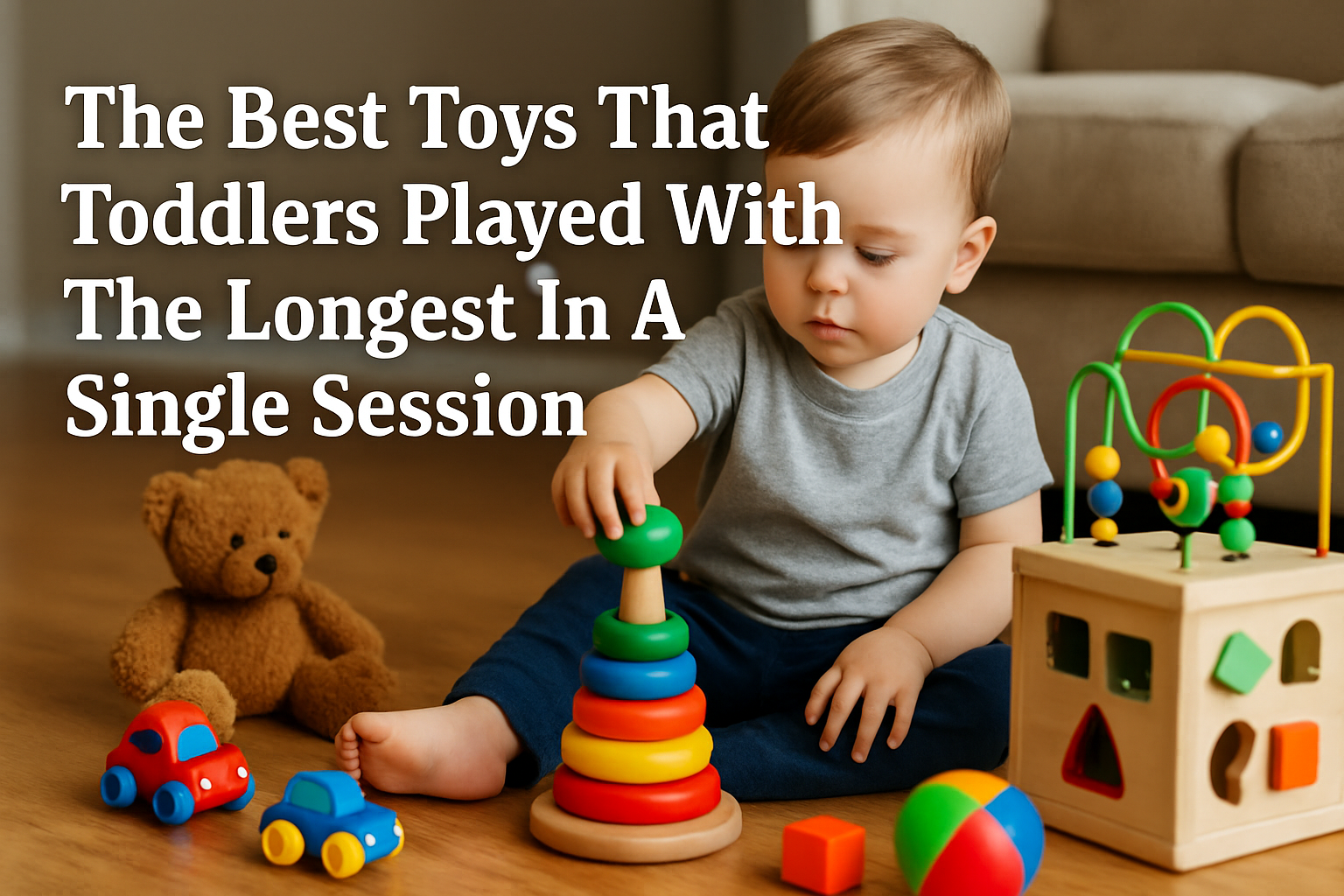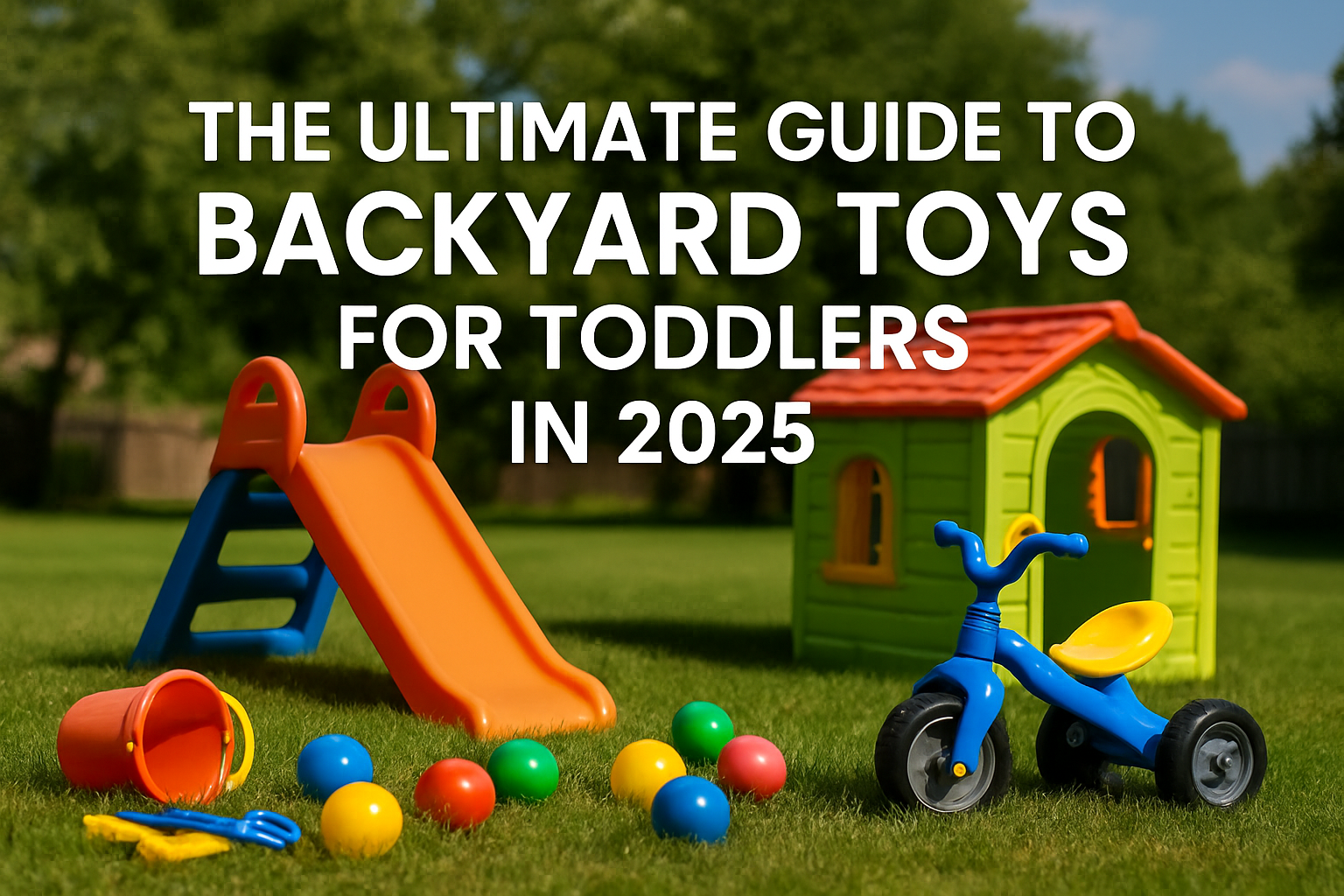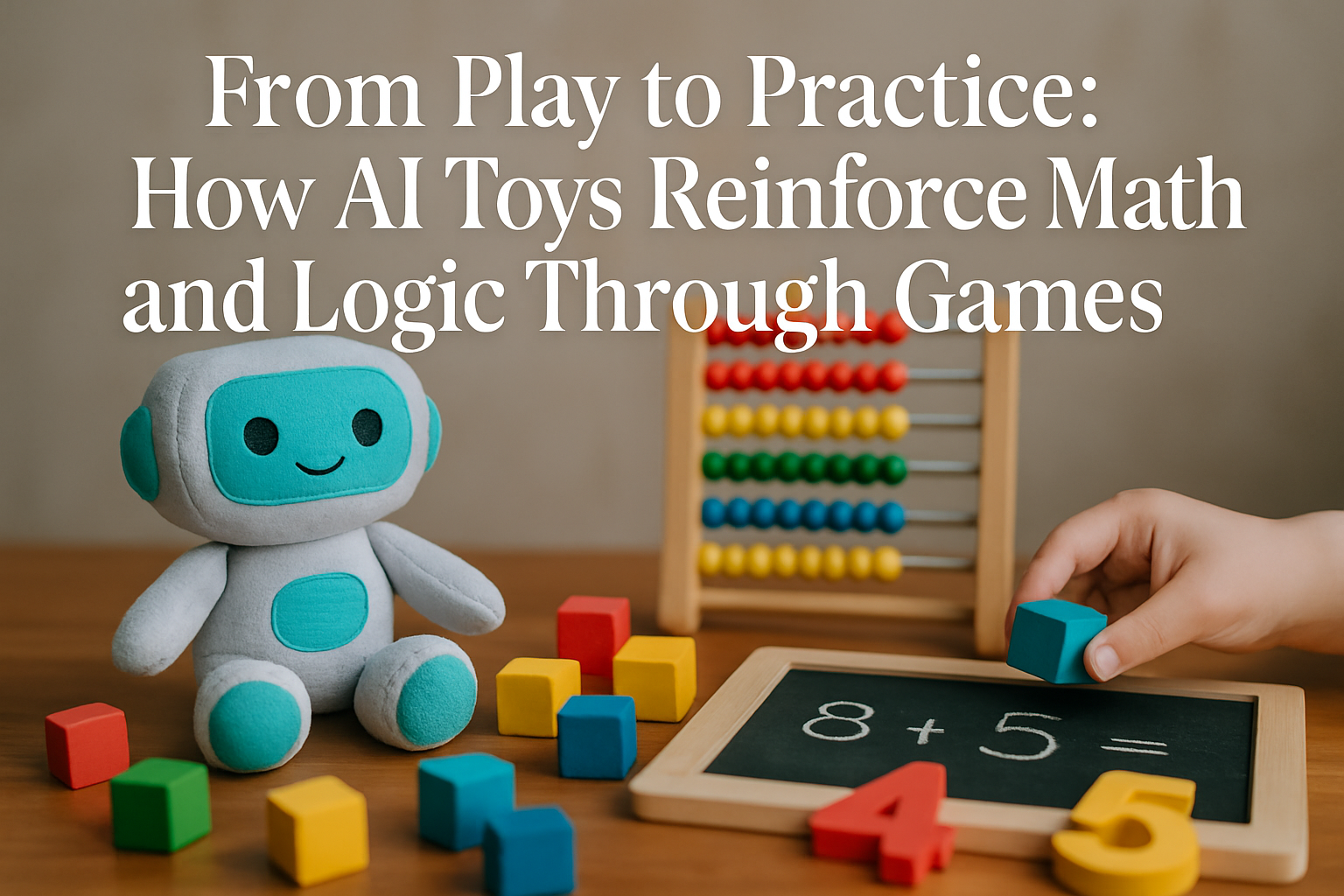What Backyard Toys Does a Toddler Like and Are Worth Getting?
Understanding the Need for Extended Playtime Long playtime is more than just...
Add description, images, menus and links to your mega menu
A column with no settings can be used as a spacer
Link to your collections, sales and even external links
Add up to five columns
Add description, images, menus and links to your mega menu
A column with no settings can be used as a spacer
Link to your collections, sales and even external links
Add up to five columns

Long playtime is more than just a way to keep toddlers occupied; it is vital for their holistic development. As children engage in extended play sessions, they are not merely passing the time, but rather enhancing their physical, cognitive, and emotional skills. These all-encompassing benefits pave the way for toddlers to thrive in various aspects of their growth, making long play sessions an essential component of their daily routine.
First and foremost, long playtime supports physical development. When toddlers have the opportunity to play for extended periods, they enhance their motor skills, strength, and coordination. Activities such as climbing, running, or manipulating toys that require fine motor skills engage their muscles and promote agility. This physical engagement is crucial as it promotes healthy bodily growth and prepares children for more complex physical activities as they age, establishing a foundation for lifelong health.
Moreover, the cognitive benefits of prolonged play are profound. During extended play sessions, toddlers explore their world through trial and error, problem-solving, and creative thinking. Engaging toys capture their attention and encourage deeper exploration, allowing them to use their imaginations fully. As they manipulate objects, build structures, or play out various scenarios, they naturally develop critical thinking and reasoning skills. This play-based learning is fundamental, as it builds intellectual foundations crucial for later educational success.
Extended playtime also significantly impacts social-emotional development. As toddlers engage in prolonged play, they learn vital social skills such as sharing, cooperating, and communicating with peers. Through collaborative play, they navigate relationships, navigate emotions, and develop empathy. Engaging toys that foster imaginative play allow them to express their feelings and encompass a broader range of social interactions, helping them learn about themselves and others.
In essence, understanding the need for extended playtime reveals its critical role in a toddler's development. As children engage in meaningful, prolonged interactions with various engaging toys, they are not just playing; they are learning, growing, and preparing for the complex world around them. Therefore, providing opportunities for longer play sessions is not only beneficial but essential for nurturing well-rounded, healthy toddlers.
When it comes to choosing toys that stand the test of time, durable and classic options are essential. One of the best types of these toys is made from food-grade silicone, which is not only safe for little hands but also promotes sensory exploration. These toys engage children with textures and allow them to develop fine motor skills through interactive activities. Their soft material makes them ideal for toddlers who may still be exploring their limits.
Wooden toys are another fantastic choice due to their reputation for sturdiness and long-lasting appeal. They can often be passed down through generations, becoming cherished items in family histories. Toys crafted from high-quality plastic also offer longevity, appealing to children and parents alike for their ability to withstand rigorous play while retaining their original charm. The ability of such toys to inspire creativity through play is a key factor that contributes to their timeless status.
Additionally, incorporating toys designed with developmental goals in mind can further enhance playtime. For instance, busy boards encourage fine motor skill advancement through interactive elements. Geometric sorting toys assist children in developing dexterity while introducing concepts of shapes and colors. These enduring toys not only provide fun but also serve as tools for early learning, making them integral parts of any child's play experience.
Imaginative play is fundamental for children's cognitive and social development, and numerous toys facilitate this aspect of play. Play kitchens represent one category that promotes role-playing and enhances language skills as children imitate adult behaviors, learning about daily routines while creating narratives around their play. Through this play, children explore real-life scenarios, which supports both creativity and life skills.
Art supplies, including easels and crafting materials, further enhance fine motor development through creative activities. As children engage in art projects, they refine their hand-eye coordination and develop an aesthetic sense. This not only provides an outlet for self-expression but also reinforces essential skills like concentration and patience. Overall, toys that encourage imaginative play are vital in creating enriching, educational play environments.
In the realm of play, toys that focus on education and problem-solving can significantly benefit a child's growth. Activity cubes are great examples, offering various interactive components that build fine motor skills while keeping children engaged in exploration. These multifaceted toys allow for learning through play, offering everything from puzzles to manipulatives that challenge young minds.
Soft stacking rings exemplify toys that aid in hand-eye coordination and understanding size variations. By stacking these rings in order of size, children learn critical thinking skills and engage with concepts of categorization. This interaction not only provides enjoyment but also fosters a foundational understanding of mathematics and spatial awareness in a playful context.
Additionally, musical instruments create opportunities for rhythm exploration, which is essential for language development. Children can express themselves musically while gaining an appreciation for sounds and patterns. Interactive books also serve a similar purpose, fostering engagement through flaps and varying textures that promote fine motor skills. Together, these educational and problem-solving toys enrich a child's playtime, making learning an enjoyable experience.
Toys play a vital role in the development of toddlers, providing opportunities for exploration, creativity, and social interaction. Certain types of toys are particularly effective at promoting prolonged play sessions, offering not only entertainment but also developmental benefits. One notable category includes building materials that encourage children to construct and create. These toys often allow toddlers to express their creativity, leading to an immersive play experience that can keep them engaged for extended periods.
Another important category is physical activity toys, which encourage movement and coordination. Toys that facilitate balance and physical engagement help toddlers develop gross motor skills, essential for their overall growth. This engagement is crucial, as it combines fun with fitness, allowing children to develop strength and coordination in an enjoyable manner. Furthermore, versatile toys such as books and figurines lend themselves to imaginative storytelling and role-playing scenarios. They encourage children to use their imagination, enhancing cognitive development while keeping the playtime dynamic and entertaining.
Imaginative play sets stimulate role-playing, which is a critical part of early childhood development. These toys promote sustained attention by allowing toddlers to reenact real-life situations or invent fantastical scenarios. This type of creative engagement not only extends playtime but also fosters social skills as children may invite peers or caregivers to join in their imaginative worlds. Ultimately, the combination of creativity, physical activity, storytelling, and role-play opportunities within specific toy categories can significantly influence the length and quality of play.
Numerous factors can impact how long toddlers engage with their toys, shaping overall play duration. One factor is the design of toys that encourage physical activities like standing and cruising, which often leads to more varied play experiences. Such toys can spark curiosity and invite children to explore their environments actively, increasing the likelihood of prolonged engagement. On the other hand, indoor toys may not always provide the same dynamic interactions as outdoor play equipment, which often invites more expansive exploration and physical movement.
The difference in play duration between outdoor and indoor settings is noteworthy. Outdoor toys tend to facilitate increased interaction with the environment, which may draw children into longer play sessions. Outdoor spaces often offer opportunities for imaginative and cooperative play, leading to enhanced social interaction among peers. Meanwhile, indoor toys may encourage solitary or less active forms of play, resulting in shorter engagement times. This distinction highlights the importance of considering the play environment when selecting toys for toddlers, as both the toy type and the nature of the play setting significantly affect how long toddlers are engaged in play.
Overall, understanding the complexities of toddler play can guide caregivers in choosing toys that not only entertain but also promote healthy development through varied, extended play experiences. By selecting toys that encourage creativity, physical activity, and imaginative interaction, caregivers can foster an enriching play environment for children.
Community feedback plays a vital role in determining which toys effectively capture the imagination and attention of young children. Among parents, certain categories of toys have emerged as favored choices, thanks to their ability to engage toddlers in meaningful play. For instance, activity tables are highly regarded for their interactive nature. These multifunctional tables provide an array of sensory experiences, allowing toddlers to explore through various activities. Parents appreciate that these toys not only entertain but also promote developmental skills such as fine motor coordination, cognitive skills, and social interaction when children play together.
Balance bikes have also gained popularity, as they serve as an excellent introduction to cycling before transitioning to traditional bicycles. These bikes help toddlers develop balance and confidence while encouraging outdoor play. The freedom associated with balance biking fosters a sense of independence and explorative play, something that is particularly valued by parents aiming to instill a love for outdoor activities in their children. Additionally, creative play sets embody the idea of imaginative play, allowing children to role-play scenarios that range from everyday life to adventurous fantasies. These toys encourage creativity, storytelling, and even social skills as children often engage in cooperative play when using them.
Moreover, traditional toys with sentimental value have a unique place in many households. These toys, sometimes handed down through generations, remind parents of their own childhoods and create strong emotional connections. The enduring appeal of such toys lies in their simplicity and ability to elicit genuine joy without relying on electronics or screens. For parents seeking to blend nostalgia with play, these traditional toys not only captivate the imagination of toddlers but also provide enduring memories. The importance of community feedback in recognizing these preferences demonstrates a collective understanding among parents about what toys are both effective and meaningful in their children’s development.
When selecting toys for toddlers, it’s essential to choose items that can grow alongside them. Versatile toys that serve multiple purposes tend to engage a child’s imagination and enhance problem-solving skills. For instance, building blocks allow toddlers to create a variety of structures, which can evolve as their skills improve. This adaptability not only keeps the toy relevant over time but encourages children to explore their creativity, making it an effective learning tool.
Moreover, toys that promote exploration are invaluable during this developmental stage. Open-ended toys, such as art supplies or simple manipulatives, can be used in diverse ways, empowering toddlers to experiment freely. When a child can interact with a toy in multiple formats, it fosters imaginative play, which is integral to cognitive development. The more a toy can challenge and inspire a child’s curiosity, the more engaged they will be, allowing their skills and confidence to flourish.
Additionally, it’s beneficial to consider toys that align with a toddler’s interests and developmental stages. Understanding what captivates your child will help you make informed choices. For example, a child fascinated by animals may benefit from interactive toys that incorporate animal sounds or stories. Such selections will not only keep them entertained but can also serve as a springboard for further learning about the world around them, enhancing their educational experience and enjoyment.
Toy rotation is a practical strategy to keep a child's play area inviting and stimulating. Establishing a schedule for changing out toys helps maintain a toddler's interest while also preventing the overwhelming clutter that often accompanies an abundance of toys. By regularly swapping out toys, children remain engaged with what’s available, as it feels fresh and exciting. This practice not only entertains but also encourages children to refocus their attention, enhancing their playtime experience.
To make toy rotation manageable, organization is key. Grouping toys by type—such as puzzles, building materials, or art supplies—allows for a more systematic approach to rotation. This method not only simplifies the process of swapping toys but also helps children understand and appreciate the different types of play available to them. Furthermore, organized play areas can enhance a child’s ability to identify and retrieve items independently during play.
Finally, it's important to observe how your child interacts with the toys you rotate in and out. By paying attention to their preferences and the ways they engage with different toys, you can refine your rotation strategy. You might find that certain toys spark more joy, or that the interest peaks after some time away from a familiar toy. Such insights will guide future toy selections and arrangements, ensuring a constantly engaging and enriched environment for your toddler. This adaptive approach not only supports ongoing learning but also nurtures their development in a fun and playful manner.

Understanding the Need for Extended Playtime Long playtime is more than just...

Understanding the Need for Extended Playtime Long playtime is more than just...
Sign up for updates, sneak peeks and a coupon for 10% OFF your first order!